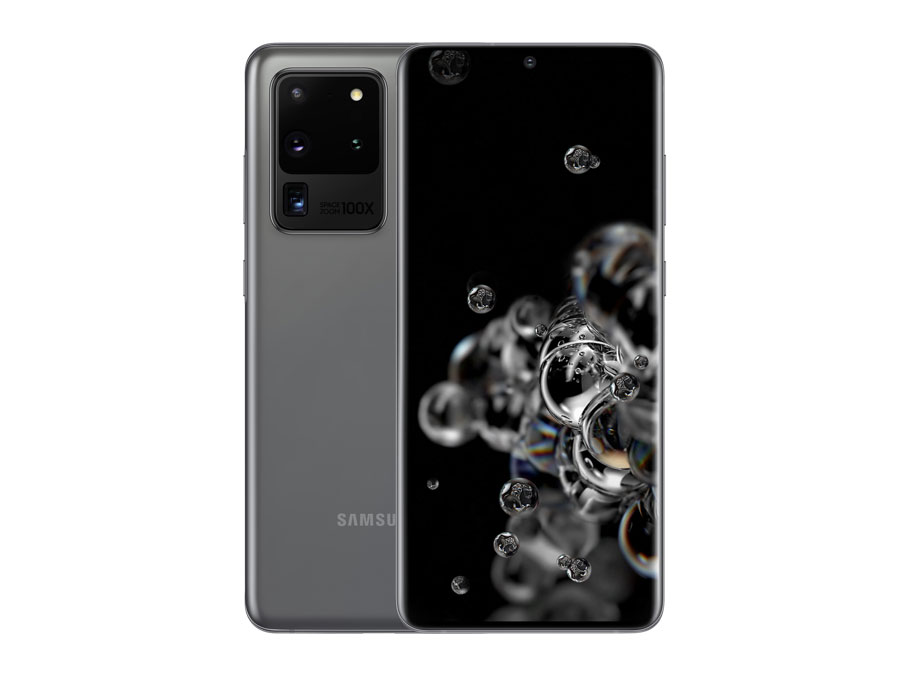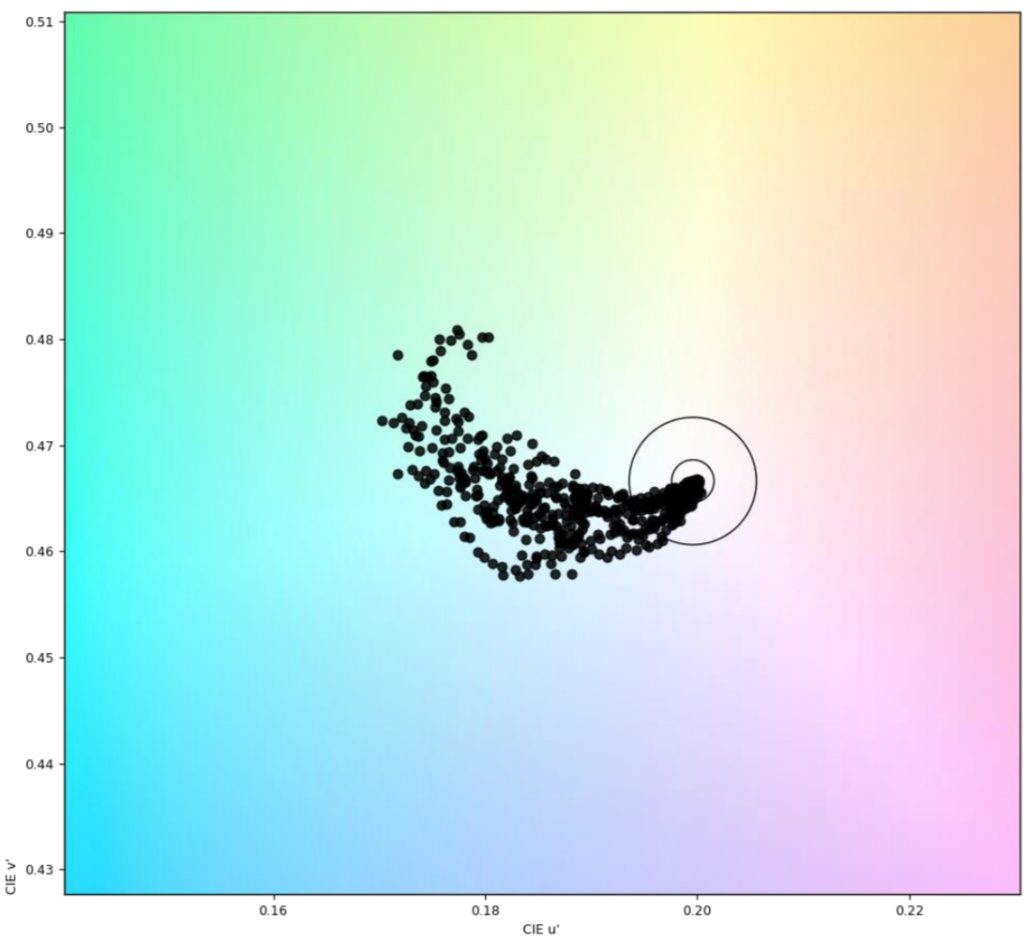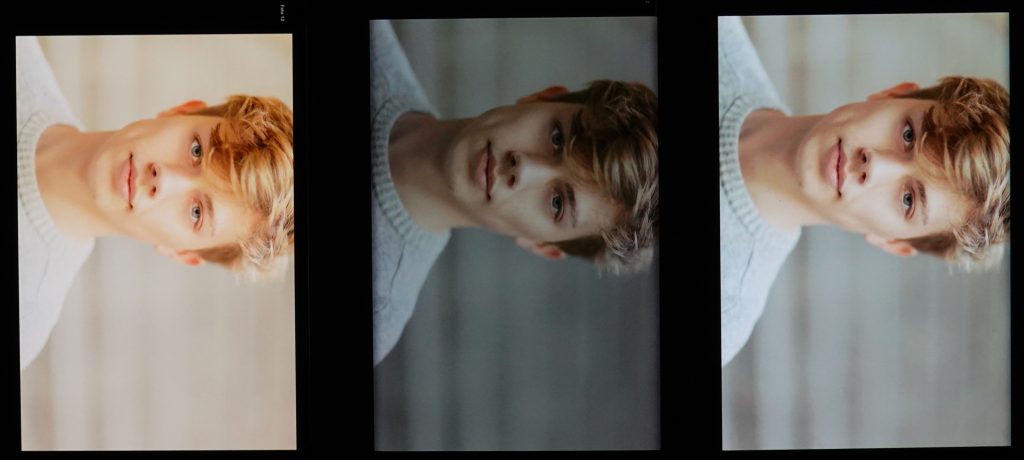After the Samsung Galaxy S20 Ultra 5G came out in March 2020, DXOMARK immediately began testing its performance for cameraselfie cam, and audio In this review, we present a summary of the S20 Ultra’s performance results for the new DXOMARK Display test protocol.
Key display specifications:
- Resolution: 1440 x 3200 px, 20:9 aspect ratio, screen pixel density: ~511 ppi
- Refresh rate up to 120 Hz
- Small circular notch in upper middle (held in portrait mode)
About DXOMARK Display tests: For scoring and analysis in our smartphone and other display reviews, DXOMARK engineers perform a variety of objective and perceptual tests under controlled lab and real-life conditions. This article highlights the most important results of our testing. Note that we evaluate display attributes using only the device’s built-in display hardware and its still image and video apps at their default settings. (For in-depth information about how we evaluate smartphone and other displays, check out our article, “How DXOMARK tests display quality.”)
Test summary
 Samsung Galaxy S20 Ultra 5G (Exynos)
Samsung Galaxy S20 Ultra 5G (Exynos)


In our previous testing, the Samsung Galaxy S20 Ultra 5G placed in the Top 10 for all three protocols — camera, selfie cam, and audio — so it isn’t particularly surprising that its performance in our new display protocol landed it in the third-place slot among tested devices, just one point behind the OnePlus 8 Pro and two points behind its Samsung sibling, the Galaxy Note20 Ultra 5G.
Although it manages brightness levels in indoor conditions quite well, its colors for still content (handled via its default gallery app) are too saturated, the effect of its blue light filter is negligible, and it has noticeable problems with aliasing. But where it really fell down was for touch accuracy and smoothness, landing at the very bottom for this attribute. However, as our review title indicates, its strongest points are for motion, where it placed first among all devices tested, and for video, where its good scores for brightness, contrast, and color landed it in second behind the TCL 10 Pro.
Analyses and comparisons
The DXOMARK Display overall score of 87 for the Samsung Galaxy S20 Ultra 5G is derived from its scores across six categories: readability, color, video, motion, touch, and artifacts. In this section, we’ll take a closer look at these display quality sub-scores and explain what they mean for the user, and we will compare the S20 Ultra’s performance in several areas against two of its principal competitors, the Oppo Find X2 Pro and the Apple iPhone 11 Pro Max.

Readability
Samsung Galaxy S20 Ultra 5G (Exynos)
70
76
DXOMARK uses the device’s gallery app to show static (still image) content when measuring the device’s display for brightness, contrast, gamma, and blue light impact, etc.
The most important aspect of a display is how easily the user can read content in various ambient lighting conditions. Ideally, a user whose phone automatically adjusts display brightness by default should rarely if ever have to manually adjust it, whether because it’s too dim to see well in bright daylight or because its brightness at night makes the user wince at first glance.
Below you can see the relationship between brightness and contrast on the S20 Ultra under different lighting conditions. Note that when contrast decreases, it is due to the ambient light reflected by the device — the more intense the ambient light, the lower the device’s contrast, unless it can compensate by providing more luminance.
Our perceptual tests showed that the Samsung (on the far right) has good contrast and brightness indoors:

Overall readability for nearly all devices outdoors under bright sunlight tends too be too low, but testing the Samsung outdoors, our testers saw that it starts out with an acceptable — even good — level of brightness, but after about five minutes, outdoor brightness sometimes plunges, rendering the screen unreadable.

For other readability sub-attributes, the Samsung display’s maximum brightness adapts to the ambient light level, but its loss of brightness at high lux levels is very pronounced, and contrast is slightly low. Moreover, the S20 Ultra responds too quickly to falling light levels — meaning that it adjusts its brightness when (for example) a user has just entered a dark room: changing too quickly — before the user’s eyes have a chance to adapt to the darkness — can be problematic.The Samsung Galaxy S20 Ultra 5G changes its gamma (the relationship between the numerical value of a pixel in an image file and its brightness when viewed on a screen) under direct sunlight but still renders pictures well, although it lacks some details in the darkest shades. (Click on any of the device names in the chart below to select or deselect them so you can see their individual results and/or compare one or more at a time as you wish.)
Users don’t always hold their phones directly in front of their eyes (that is, on-axis), but sometimes hold their phones at an angle, which can affect readability. (Click on any of the device names in the chart below to select or deselect them so you can see their individual results and/or compare one or more at a time as you wish.)
You can see how brightness changes for all three phones in the two sets of photos below; the first set is on-axis:

The second set is at a viewing angle of 45°. Only the Oppo (middle shot) retains something approximating its on-angle brightness, but even though a bit darker, Samsung display is quite readable. The iPhone started out hobbled by a dark display overall, which was further impaired on-angle:

The Samsung Galaxy S20 Ultra 5G’s brightness at night is slightly too high with the blue light filter (BLF) turned off (although nowhere near as bright as the Oppo in the middle):

However, it was just perfect with the BLF turned on. You can see in the shots below that the Samsung is head and shoulders above the iPhone 11 Pro Max, which has a significant orange shift and ends up too dark to be readable.


Color
Samsung Galaxy S20 Ultra 5G (Exynos)
77
92
DXOMARK uses the device’s gallery app to show static (still image) content when measuring the device’s display for white point, gamut, uniformity, color fidelity, and blue light filter impact, etc.
The Galaxy S20 Ultra puts in only a middling performance for color, although it lags a bit behind the Oppo in this respect, due in part to an orange cast (fairly visible in the photo array below):

Both the Samsung and Oppo devices are ahead of the iPhone 11 Pro Max, however, whose performance was severely hampered by a very strong yellow cast in all conditions. This said, the S20 Ultra is very orange in its outdoor shots in bright light, losing points not only for the strong color cast, but also because its colors were too saturated for the ambient light conditions:

Viewing a smartphone display at an angle can also affect its color fidelity. In the chart below, each dot represents a measurement taken at a discrete angle and distance from the device; dots inside the inner circle exhibit no color shift; those between the inner and outer circle have shifts that are just noticeable by trained experts; but those falling outside the outer circle are noticeable. You can see that the Samsung’s white point shift spreads quite a ways outside the circles into blue-cyan territory:


And indeed, our perceptual tests confirmed that tendency, as the S20 Ultra (right-hand photo) shows a very pronounced blue cast:

The Samsung Galaxy S20 Ultra 5G was not perfectly uniform in its display of color: our testers noticed a color gradient around the notch and from the top down to a slightly reddish area at the bottom of the device, and they also observed a slight color shift on the edges, due to the display curvature.
As for BLF, there is essentially no change to color at all, and in fact, our objective tests showed that the S20 Ultra failed to reduce the strength of the blue light wavelengths.

Video
Samsung Galaxy S20 Ultra 5G (Exynos)
83
91
DXOMARK uses the device’s video (or browser) app to show dynamic content when measuring the device’s display for brightness, contrast, gamma, and color.
Video is where the Samsung really shines, consistently not just doing better than its competitors in nearly all categories, but beating them soundly. The S20 Ultra was particularly strong for brightness watching both HDR10 and SDR videos. It was a little less impressive for contrast, but still handled highlights well:

Another strong point for the S20 Ultra was for video color, including accurate skin tone rendering. (Note that while it looks darker than the output from the other two devices, the Samsung shot on the right was by far the closest match for the reference image used in testing.)


Motion
Samsung Galaxy S20 Ultra 5G (Exynos)
84
87
The Samsung Galaxy S20 Ultra 5G achieved a very good score for motion, coming in first among for all tested devices. It had few objectively measured frame drops and no frame drops perceived when gaming. For video app content, however, the device shows some stutter and some pattern duplication in our tests for motion blur.

Touch
Samsung Galaxy S20 Ultra 5G (Exynos)
55
85
Touch accuracy was a significant problem for the S20 Ultra, whether for still image (gallery app) content or for gaming. — Indeed, the Samsung’s lack of touch accuracy made for an unenjoyable gaming experience, with lots of redos necessary. Further, the Samsung device consistently over- or undershot when zooming in the gallery app.

The S20 Ultra is not accurate when zooming in the gallery app (dots should remain hidden under fingertips).
Photo credit: DXOMARK; for illustration only
For touch smoothness, however, the S20 Ultra’s performance was mixed: it did very well when gaming, but proved disappointing when dealing with gallery app (still image) content.

Artifacts
Samsung Galaxy S20 Ultra 5G (Exynos)
79
86
Although the Samsung Galaxy S20 Ultra 5G has a relatively small notch, its placement in the top center (right-side center in landscape mode) occasionally interfered with viewing and interacting with content, particularly when gaming.
All devices flicker to some degree; while the iPhone’s flicker is higher than that of its rivals at most frequencies, the Samsung surpasses it at the lowest end of the continuum and shows a spike at around 240 Hz. This said, flicker is not likely to affect most users’ viewing experience. (Click on any of the device names in the chart below to select or deselect them so you can see their individual results and/or compare one or more at a time as you wish.)
But the biggest problem for the S20 Ultra as far as artifacts are concerned is with aliasing, where the characteristic “stair-stepping” along curved lines is particularly noticeable in the screen grab of the Samsung’s rendering in our gaming use case below; you can compare it with the Apple iPhone 11 Pro Max, which does a much better job:
Further, although its video playback was good overall, the Samsung had some problems with performing 3:2 pulldown, resulting in some judder for 24 fps content; it performed well when handling 30 fps and 60 fps content.
Conclusion
A very good display performance for Samsung Galaxy S20 Ultra 5G, particularly for motion and for video, where it bested all but the TCL Pro in nearly all sub-categories. Indeed, its only real weakness was for touch accuracy, which likely disqualifies it in the eyes of any serious gamers. But along with motion and video, its decent brightness and color, and good control of motion blur all contribute to its well-deserved spot on the Display quality podium.
Pros
- Very good video color rendering, especially for HDR10 content
- Video brightness levels are well adapted.
- Blue light filter color shift is acceptable.
Cons
- Colors are highly saturated in outdoor conditions.
- Blue light filter does not reduce blue light.
- Aliasing is quite strong.
- Touch lacks accuracy.





DXOMARK encourages its readers to share comments on the articles. To read or post comments, Disqus cookies are required. Change your Cookies Preferences and read more about our Comment Policy.